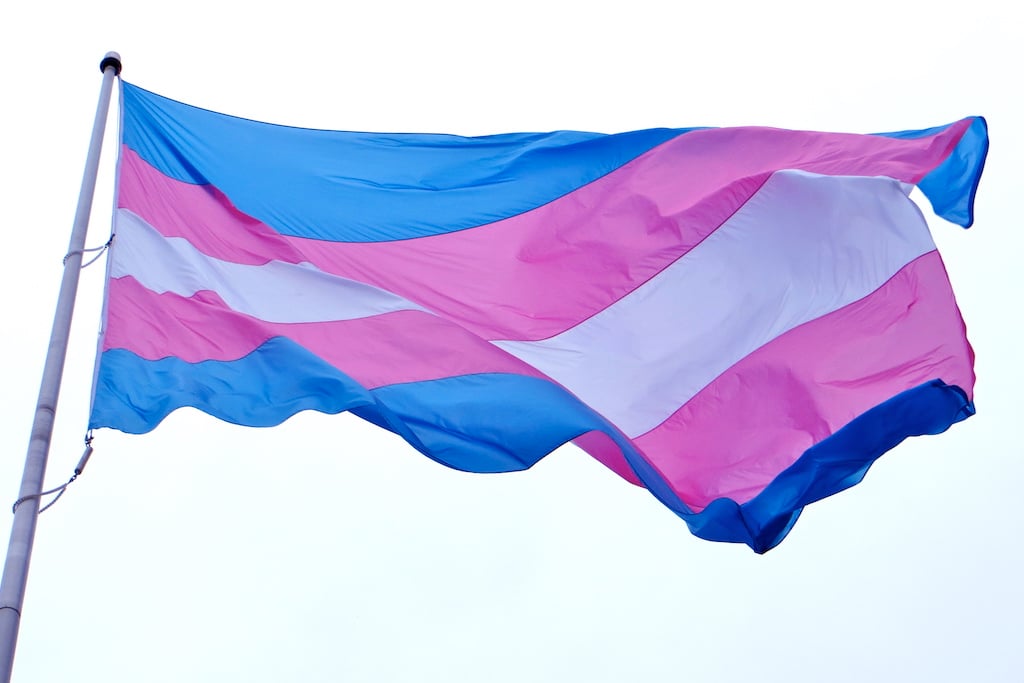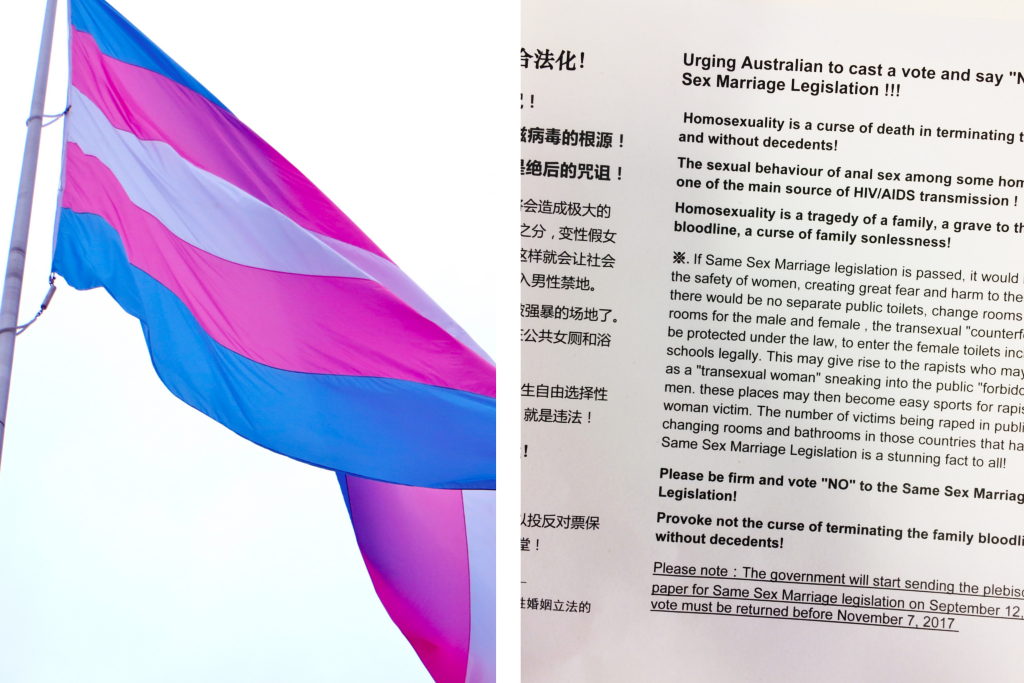Let’s Talk About Deadnaming, Misgendering, And How To Not Do It
It's just a matter of common courtesy.

Elliot Page, the star of acclaimed Diablo Cody comedy Juno and recent Netflix comic book adaptation The Umbrella Academy, has come out as transgender in an emotional statement posted to his social media. It’s worth revisiting how to navigate deadnaming and misgendering after someone comes out as trans.
— This article has been updated November 2020 —
I know it’s a relatively small thing but it’s nice to see most news sites now announce this news by going straight with the correct name and pronoun pic.twitter.com/0hTmbhYexH
— Bec Shaw (@Brocklesnitch) December 1, 2020
Over the weekend, one of the world’s most famous journalists interviewed one of the world’s most famous transgender women at the Sydney Opera House. It was a highly publicised event, the result of months of planning. But in his very first question, interviewer Peter Greste referred to Chelsea Manning by a name she has not used for five years.
It was an uncomfortable moment — Manning visibly flinched, and immediately told Greste “please don’t deadname me”. The crowd applauded, and Greste didn’t do it again. But this wasn’t an isolated incident. Two days earlier, sports journalist Matt Thompson wrote an article about transgender AFL player Hannah Mouncey in which he referred to her by her former name, which had nothing to do with the story at hand.
Thompson’s report was also met with criticism, and has since been quietly amended to remove the name.
I'm not linking to that article where @MattThompson deadnames Mouncey but I would strongly advise against giving it a click.
— Frith 🐾 (@gameof4quarters) August 31, 2018
It’s fair to say that neither Greste nor Thompson set out to be disrespectful here. But good intentions don’t undo the fact that their comments may have done harm to the people they were writing about, as well as to their transgender audience members or readers.
Good intentions also don’t excuse these journalists from their responsibility to do their research. While many members of the public may never have heard the term “deadnaming”, anyone paid to research and report on a subject should reasonably be expected to know more.
LGBTIQ organisations have produced a multitude of easily accessible guidelines for reporting stories featuring transgender people, and all of these guidelines are very clear in their advice on names: use the name a person has provided you with. In Chelsea Manning’s case, she was already a high profile figure when she came out as trans — major newspapers ran headlines that began “Call Me Chelsea”, and which quoted Manning’s request that “starting today, you refer to me by my new name and use the feminine pronoun”. It’s hard to imagine how anyone who even briefly researched Manning ahead of interviewing her could have missed that.
And yet, even someone as famous as Chelsea Manning was accidentally deadnamed this week, in an event where questions were no-doubt drafted and mulled over well ahead of time. Let’s take this opportunity to talk about what deadnaming is exactly, why it’s so harmful, and how we can stop doing it.
What Is Deadnaming, Anyway?
A “deadname” is a name someone was previously known by but does not use anymore. You might also hear it called a “birth name”. It’s a term you’ll most commonly hear used in reference to transgender people. If, say, a person was named John at birth but later transitioned and asked to be referred to as Claire, “John” is their deadname. Deadnaming often goes hand-in-hand with misgendering, or using the wrong pronouns for a person — calling someone “he” or “him” when they have asked to be called “she”,”her”, “they” or “them”, for example.
There are lots of ways people get deadnamed. Sometimes, dickheads will deliberately use a deadname to hurt a person. Other times, people who were close to a person before they changed names will accidentally use a deadname out of habit. Disappointingly often, journalists will use a person’s deadname when referring to things that happened in the past, or as a bit of extra context in an article. For example, a journalist might use Caitlyn Jenner’s deadname when referring to her Olympic achievements before she transitioned.
That context, though, is rarely necessary. In the case of Chelsea Manning’s interview at the Opera House, everyone who bought tickets was well aware of who she is. It is possible to discuss the events Manning is famous for — leaking military information to WikiLeaks and serving time in military prison, even her coming out as trans — while still calling her Chelsea. In the case of Hannah Mouncey, it’s possible to report on the fact that the AFLW is making it difficult for her, as a trans woman, to play the sport, while still calling her Hannah.
What’s The Big Deal, Though?
Not only is it possible to tell these stories without deadnaming, it also avoids harm. For many trans people, changing names is an incredibly important step in affirming their gender identity. Many people associate their deadname with feeling uncomfortable, with the stress of coming to terms with being trans, or the stress of coming out. Often, people associate their deadname with serious trauma — rates of depression, suicide, and other mental illness are extremely high for young trans people in particular, and for many an old name is a reminder of their lowest points.
A new name, by contrast, can feel like a fresh start, like finally beginning to feel comfortable and confident. Hearing people actually use the name you’ve asked them to use feels like being respected and listened to.
Honestly, though, mostly a person’s preferred name just feels normal and unremarkable to them, because it’s their name — it’s the sudden slips when someone deadnames you that feel out of place and really ruin your day. Take it from someone who has received upwards of five emails calling them the wrong name in just the time it has taken to write this article: it’s exhausting, and shitty, and slowly chips away at any good mood you might have started off with. When it happens in public, it can be embarrassing. When other people in the room take it as a cue to also use that name, it feels like all the progress you’ve made slowly unravelling.
Obviously, not all transgender people are the same, and some are happy to be referred to by multiple names. Some people just aren’t as bothered by their old names — some people are even fond of them. You’ll know when this is the case, though, because these people will tell you this. After all, people tend to introduce themselves with the name they would like you to use.
And if it’s still unclear to you, just ask: it’s fine to check with someone to see what name and pronouns they’re comfortable with you using, as long as you actually follow up and use those once you’ve been told.
This Isn’t Just About Trans People — It’s A Matter Of Common Courtesy
And really, none of this is new or difficult — using the name someone would like you to use for them is common courtesy. At the end of the day, people change their names for a whole host of reasons. Whether it’s because they’re trans, or because they disliked their previous name, or for a reason that’s none of your business, it’s simple politeness to ask a person what they’d like to be called, and then to remember that.
Remembering that this is just about common courtesy is also helpful in working out how to respond if you fuck up. Think about how you would typically respond if you accidentally called someone the wrong name at a party or at work: you’d apologise quickly, and then do your best to not do it again. Similarly, it’s easier to quickly confess that you’ve forgotten someone’s name and double check what it is, than to just assume and hope for the best.
A world in which more people thought to ask — and listen to — what people would prefer to be called would make a lot of people much more comfortable. It would also be very easy to achieve. Let’s try not to deadname people this week, and go from there.
Sam Langford is Junkee’s Staff Writer and tweets at @_slangers.

